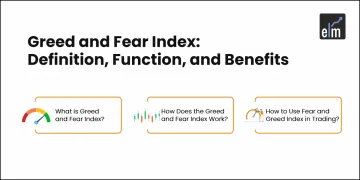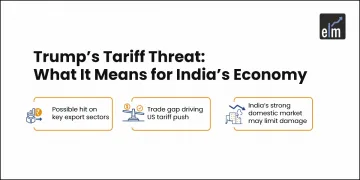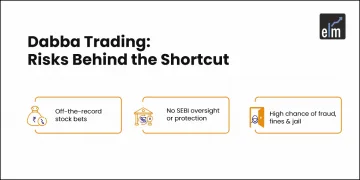Do you know that Accumulation and Distribution Line Indicator helps us identify divergences between the volume flow and stock prices? Yes! Accumulation and Distribution Line uses price and volume to determine whether the stock is accumulated or distributed.
This volume indicator helps us provide strong insights into whether the stock trend is strong or not. When the Indicator is falling, but the price is increasing, then this suggests that the volume is not strong enough to support the rise in the price and vice versa,
So, in today’s blog, let us discuss the Accumulation and Distribution Line indicator and how to use this Indicator when trading in the stock market:
What is Accumulation and Distribution Line Indicator?
The accumulation distribution line indicator is a volume-based indicator formed by the relationship between the price of the stock and volume flow to determine the trend of a stock. The term “accumulation” refers to the level of buying (demand) of a stock, while “distribution” refers to the level of selling (supply). Thus, one can forecast a stock’s future price trend based on its supply and demand pressure.
How to trade with this Indicator?
The A/D Indicator’s main rule is that stock volume comes before price. The number of shares traded is proportional to the stock prices rising and falling. The A/D Indicator, like other volume indicators, predicts volume flow direction. It aids in predicting future stock price movements and thus provides an advantage.
- When both the Indicator and stock price make higher peaks and through, we may see that the uptrend is going to continue:
- When both the Indicator and stock price make lower peaks and through, we may see that the downtrend is going to continue:
- During the range-bound market, when the A/D line starts increasing, then we may say there is accumulation in the stock, and the stock may break out in the up direction:
- During the range-bound market, when the A/D line starts decreasing, then we may say there is distribution in the stock, and the stock may break out in the down direction:
- When A/D Line makes lower highs, but prices make higher highs, then we may there is negative divergence, and the stock may reverse to a downtrend:
- When A/D Line makes higher highs, but prices make lower highs, then we may there is positive divergence, and the stock may reverse to an uptrend:
You can also read our blog on 9 Types of Volume Indicator a trader should know
Difference between Accumulation and Distribution Line Indicator and On-Balance Volume Indicator
Both of these technical indicators, albeit slightly different, use price and volume. On Balance Volume Indicator measures whether the current closing price is higher or lower than the previous close. If the close is higher, the volume of the period is added. If the close is lower, the volume of the period is subtracted.
The A/D Indicator ignores the previous close and employs a multiplier based on where the price closed within the period’s range. As a result, the indicators use different calculations and may provide different results.
You can also join our course on Certification In Online Technical Analysis
Bottomline
An uptrend indicates that buying pressure is present consistently, whereas a downtrend indicates that selling pressure is present. Bullish and bearish divergences alert for a potential reversal on the price chart. The Accumulation Distribution Line, like all indicators, should be used with other aspects of technical analysis, such as oscillators and chart patterns. It is not a stand-alone metric.
We hope you found this blog informative and use it to its maximum potential in the practical world. Also, show some love by sharing this blog with your family and friends and helping us in our mission of spreading financial literacy.
Happy Investing!







good article